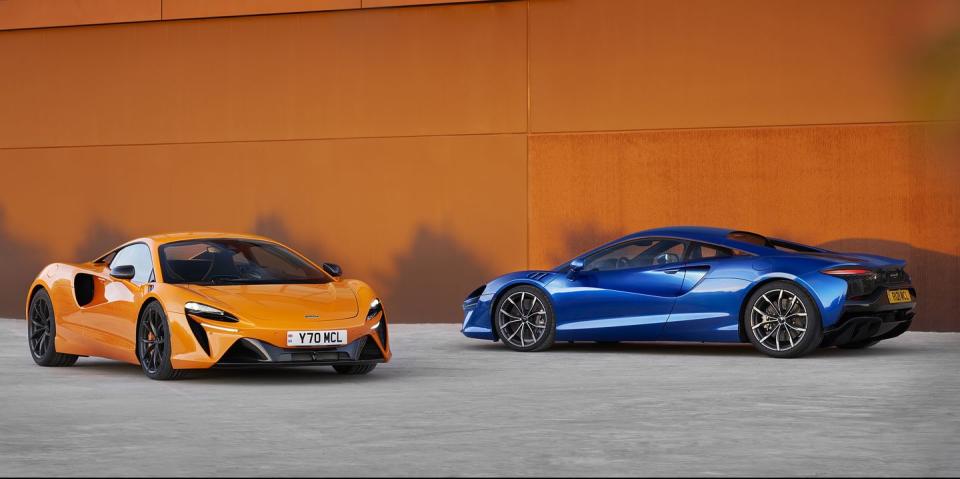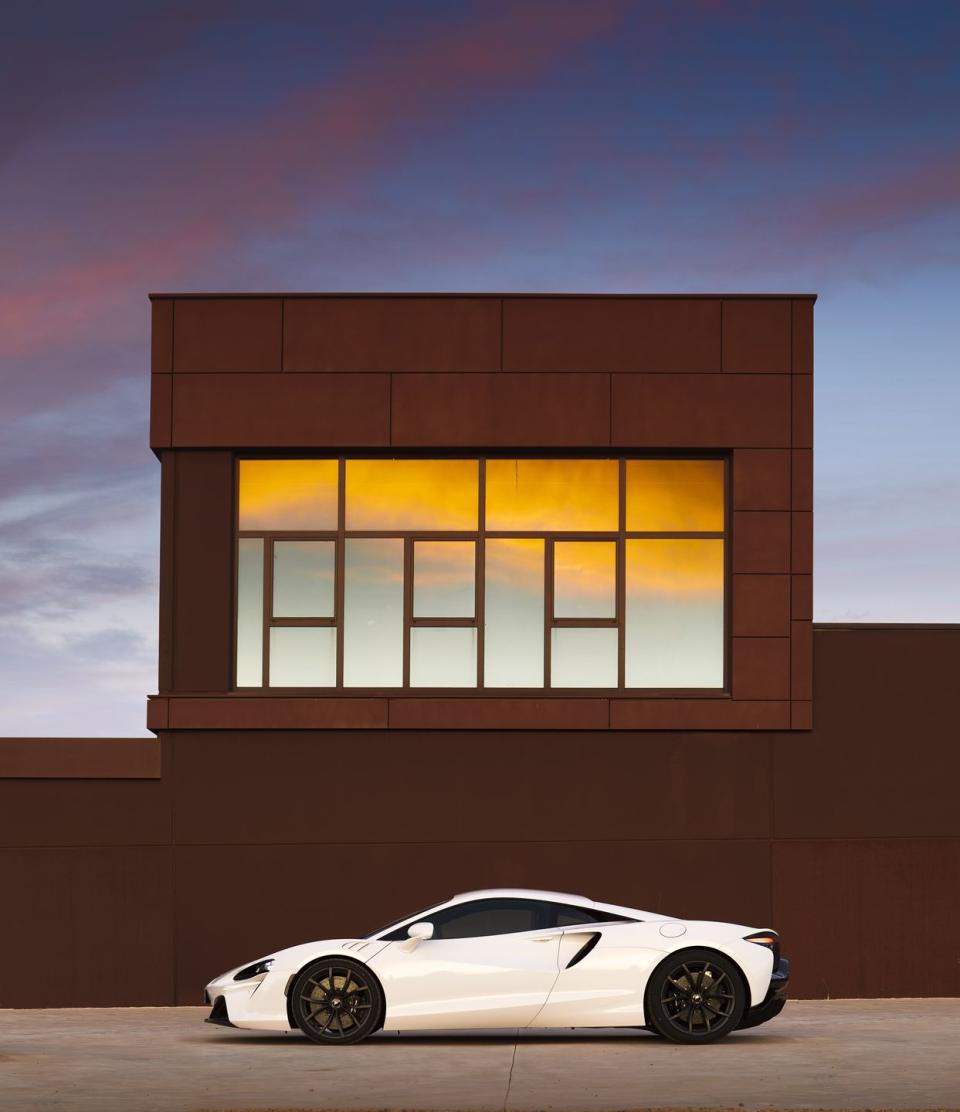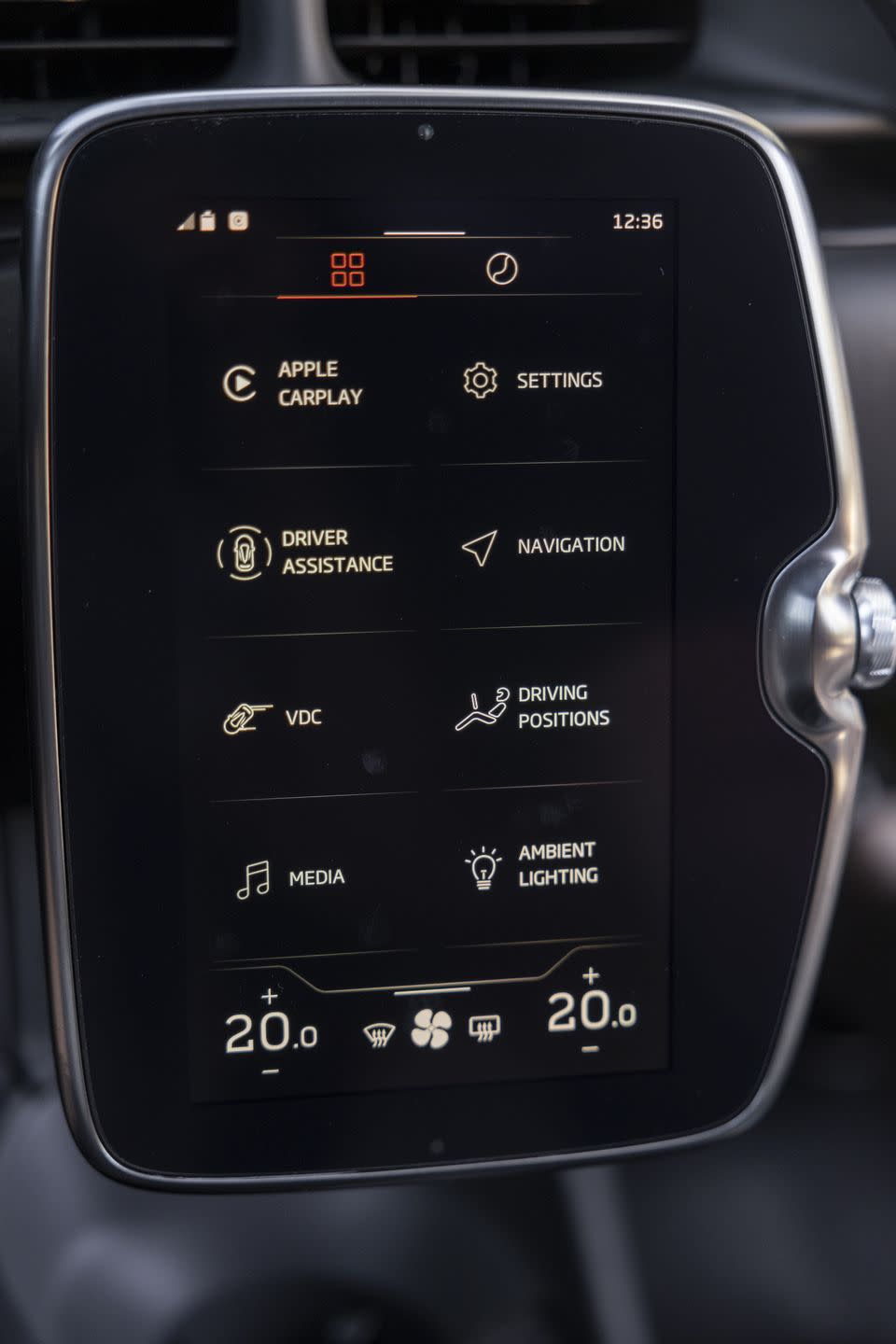McLaren’s Post-Pandemic Rebirth Is Off to a Rocky Start

The COVID-19 pandemic has had a profound effect on all automakers, but McLaren Automotive seems to be one of the hardest hit. McLaren has struggled with wave after wave of parts shortages and financial losses that led the company to seek emergency funding, sell a stake in its F1 team, and even sell off its headquarters only to lease back the building. After 18 months of delays, the company was finally ready to show off its next-generation car, the hybrid Artura. The replacement for the successful 570S, this was the redemption moment. This was what it had been working towards. That's when we heard about critical issues at its media launch.
The gestation of the McLaren Artura hasn't been easy. As its first volume-production hybrid and a car that shares no major components with any previous McLaren, it's one of the most ambitious undertakings in McLaren Automotive's short history. Unfortunately, it's been beset by significant delays, and with customer deliveries set to begin next month, the car isn't completely ready. After canceling on very short notice a media-test drive program last October over what McLaren said was pandemic-related software issues, the press drove the Artura last week, and a number of U.K.-based journalists reported serious issues with the car. One test car caught fire on track, and a number were hampered by software problems.
This isn't ideal, as the Artura is of critical importance to McLaren and that's not simply the opinion of this reporter. McLaren itself said so in its Fiscal Year 2021/Quarter 1 2022 results presentation last month: "The delay to the launch of Artura has had an adverse impact on the cash flows of the Group with lower EBITDA [earnings before interest, tax, depreciation, and amortization] and some working capital absorption as Artura stock has been built in advance of customer deliveries. The commencement of deliveries of Artura supports a stabilizing cash position in H2 [half 2 of 2022] compared to cash absorption in H1 [half 1 of 2022]."

McLaren needs the Artura to be a success. Sales fell from 4662 units in 2019 to 1659 in 2020, and the company was forced to raise money from shareholders and get a loan from the National Bank of Bahrain, sell a stake in its Formula 1 team, and sell its Woking, U.K. headquarters. In 2021, it leased back its headquarters and took a huge investment from the Saudi Investment Fund, and also benefited from a turnaround of its F1 team, and sales rose to 2138 thanks in part to the 765LT. Still, there were problems. McLaren Automotive cut the planned 399-car production run of the Elva first to 249 units then to 149. At the time of the initial production cut, then-CEO Mike Flewitt said that the move was made to ensure "exclusivity," though Autocar reported that McLaren had underestimated demand for the car.
McLaren revealed the Artura in February of 2021. The initial plan would see deliveries begin by the end of the year, but that obviously didn't happen. Shortly after the canceled October media test drive, McLaren Automotive announced that Mike Flewitt was stepping down after eight years at the helm of the company, without offering any explanation why. Flewitt's permanent replacement, former Ferrari CTO Michael Leiters, was only announced two months ago. In December of 2021, Automotive News reported that Artura deliveries would be delayed until July 2022, which a McLaren spokesperson said at the time was a result of the global chip shortage affecting the entire auto industry.
Last week's media first drive of the Artura did not go smoothly, at least for the initial group of U.K.-based journalists in attendance. At Autocar, Matt Saunders writes "our Artura test car encountered some thermal powertrain management issues that brought a concerning end to our first track test session, and were the cause of plenty of smoke, and track marshalls hurriedly emptying their fire extinguishers into the car’s engine bay. McLaren explained that the car’s cooling system had been mistakenly fitted with the wrong oil cooler—an honest mistake, perhaps. But one other car on the launch suffered from its own thermal incident unrelated to ours, and others had ultimately less serious but still concerning software problems."
That "thermal incident" was a fire, as R&T contributor Lawrence Ulrich reports, which McLaren said was the result of an incorrectly torqued nut on a fuel line. In a video for Carfection, Henry Catchpole said that the brake pedal on his car went long, too. It's worth noting that neither Ulrich, nor R&T Editor-in-Chief Mike Guy had any issues with the cars they tested, and it's also worth noting that cars can catch fire on track for any number of reasons, and that brake pedals go long because of disc/pad wear and boiling fluid. Less spectacular, but perhaps most worrying were the software issues reported by U.K.-based journalists who drove the Artura before U.S.-based media.

"Out on the road loop, both the dash and the central touchscreen on our test car suddenly faded to black for no apparent reason," Angus McKenzie wrote at Motor Trend. "The digital instrument panel flickered back into life, but the central touchscreen remained out of commission—along with the air conditioning, the navigation, the audio, and the phone connection—for the remainder of the trip… Our car wasn't the only one with problems; several other Arturas suffered similar infotainment system failures, and one journalist was stuck by the side of the road when his car simply cried uncle and quit running altogether. It was eventually coaxed back into life but would only drive in 'limp home' mode, which made for a slow trip back to base."
Over at Autoweek, the U.K.-based Mike Duff (another R&T contributor) wrote "[m]y test car’s snazzy new user interface system shut down 15 seconds after I started driving it and had to be rebooted. It also failed to detect the presence in the cabin of its wireless key several times. Other journalists reported similar faults throughout the drive program."
McLaren told Road & Track that the cars on the test drive were early pre-build customer cars which won't be sold. The two hardware issues were ultimately the result of non-production-spec parts used, and the oil coolers and fuel lines were checked for journalists arriving later. The company also tells us that customer deliveries will only begin when a software update is issued that addresses the bugs. That's only so reassuring because as Duff said, it "[begs] the question, what have the company’s data engineers been doing the last eight months?"

The Artura isn't just important for McLaren's near-term financial help, either. It's also the first all-new car from McLaren Automotive since the brand launched the 12C (née MP4-12C) in 2011, and it's a platform from which it will build further new models. It's an extremely ambitious project, with a carbon-fiber monocoque made in-house, an electrical architecture that uses ethernet cabling instead of a traditional wiring harness, a twin-turbo V-6 designed in-house—McLaren's V-8 is derived from a 1990s Nissan racing engine—and a hybrid system. McLaren's done hybrids before with the P1 and Speedtail, but the Artura is the first that will be built in significant numbers. Plus, the brand plans for all of its offerings to be electrified by 2026.
It's safe to say McLaren has a lot riding on the Artura.
You may recall the engine fires that caused a global recall of early 991-generation Porsche 911 GT3s back in 2014, which forced the automaker to replace the engine in the first 785 cars delivered. Now, the GT3 is a big source of profit, but a low-volume car in the context of Porsche. What's happening with the Artura is more like if Porsche was at the brink for two years and it couldn't get the Macan to work. Ferrari, too, notably had fires with early production 458s, a result of bad adhesives in the wheel-well linings. Yet, the 458 was not a make-or-break car for Ferrari like the Artura is for McLaren. Ferrari is and was part of a larger car company, was on firmer financial footing at the time, and is significantly more established than McLaren, a relative upstart in the exotic car market.
McLaren maintains the hardware issues that affected two of the cars on the launch and the larger software issues won't be an issue for customers. It's also looking to boost customer confidence by offering the Artura with a five-year, 45,000-mile warranty, a six-year, 45,000-mile warranty for the hybrid battery, and three years of free servicing.

It is, of course, possible that none of the issues that presented themselves at the media event will affect customer cars, as McLaren says. The warranty could be an accurate reflection of McLaren's confidence in the Artura. Still, such major issues at a press drive for a car held just weeks before customer deliveries begin is worrying, even before you take into account how long the Artura has already been delayed. Major and/or frequent issues with customer cars could very well have dire consequences for a company still very much in recovery from the effects of the COVID-19 pandemic.
It would be a shame, too, as McLaren makes great cars. The 720S is beloved, and reviews of the Artura are largely positive, even while acknowledging the issues. Like the 570S it replaces, the Artura seems to be a very compelling supercar, one that blends old-school thrills with new technology. It also provides a platform which McLaren will build upon for years to come. There's a lot riding on its success.
You Might Also Like

 Yahoo Autos
Yahoo Autos 